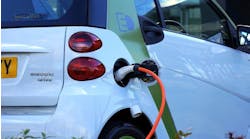Over the last year there’s been plenty of attention paid to the highs and lows of vital industry metrics like car parc, vehicle miles driven (VMT), delayed repairs and climbing odometers, but the peak of a less touted repair trend could have a larger post-pandemic impact in the way shops relate to and work with their customers.
In a recent report, “Auto Aftermarket Effects of COVID-19,” The Martec Group, supported by the Auto Care Association, found that consumers have gained more confidence in tackling auto repairs themselves, with respondents indicating a four percent increase in DIY standard maintenance and an eight percent increase in DIY under-car repairs since the start of the pandemic.
To learn more about the uptick and what the trend could mean for repair shop customer traffic down the line, Ratchet+Wrench checked in with study author and Martec partner and CMO Chuck Bean.
How exactly has the pandemic impacted DIY repairs?
I think the biggest takeaway from our findings was that people got much more comfortable with DIY over the last year and a big part of that was having extra time on their hands.
Whether they weren’t working or they were working from home and had some extra time from cutting out the commute—whatever the reason, we found that there was a whole segment of people who started thinking “Well, if I can fix my appliances and other things around the house, I’m going to take a stab at fixing my car.”But the more surprising part may be that the spike extended beyond basic maintenance—we’re not just talking about replacing batteries. A lot of people got to work learning to do repairs under the hood and under the car itself with an 8 percent increase in DIY work on engines and transmissions and the same bump in DIY work under the car.
We also saw a spike in the Install It For Me (IIFM) space. Along with working on their own repairs, more people got comfortable ordering their own parts with a 5 percent increase in the trend since the pandemic hit.
Will this bump stick? Or are we at a peak?
I think we’re seeing a spike with DIY like we’ve seen with vehicle sales. They’re up right now and they’re forecasted to be up for the year, but they’re not likely to get back to 2019 levels.
We’re either at or past the peak for this trend, so we’re likely to see these metrics dip again as things get back to “normal." We really only expect an overall net change in DIY and IIFM space of a few percentage points, but that change is going to be more of a shift in tectonic plates.
Maybe people embraced DIY and IIFM when they had extra time on their hands, but will they stick with it when they don’t? The answer is no. What will last? The knowledge and comfort level they gained by ordering parts or handling certain repairs themselves. That' won't disappear overnight.
If the DIY spike won’t last, what’s the bigger impact of this temporary trend?
With all of the COVID studies we’ve done, the question we're asking is "What is the lasting impact of these big momentary shifts?"
With the DIY and IIFM shift, shop owners are going to be dealing with a larger segment of more informed customers—especially when it comes to specific parts and where they came from, whether they’re OE or aftermarket. Consumers have done their homework and studied up.
Shops may also see a slight spike in the types of repairs coming through the shop from customers who were either only able to take the repair halfway before getting stuck, or who botched the job and actually made things worse.
Overall, the DIY repairs of the basic, more standard maintenance elements are likely to stick. DIYers might not have time to tackle every repair going forward—they’ll likely return to bringing those in-depth, more laborious or mission critical repairs directly to the shop—but maybe something like a brake pad replacement is a quicker project they’ll continue to do themselves now that they’re comfortable with it.
That’s a lasting impact that can chip away at those basic repairs that shops rely on to get some customers in the door. That's not good news for shop owners, so the question becomes “How can shops work with these customers instead of against them?”
What can shops do to adapt?
The DIY and IIFM trends aren’t new, but the pandemic did exacerbate them, so it’s important to recognize that there will be a segment of more educated customers coming in, and there are probably going to be more customers coming in with requests to install the parts they’ve supplied as well. It’s something to keep in mind when you think of how you’re talking to those customers.
If someone does want to bring in a part, shops may need to start taking a fresh look at their policies and begin to consider where there’s room to be more flexible or avoid painting with such a broad brush. Certainly shops have policies in place on things like customer-supplied parts for good reason, and many of those policies are in place to keep customers safe, but are there product categories where shops can be more open and flexible? If there are areas you’re not able to be flexible, what can you do to help those customers and still be a resource to them?
A new crop of better-informed customers could also be a help in building stronger customer relationships. If you can talk to them in a way that meets them on their level—starting the conversation with something like “Have you ever done one of these yourself? Oh, if you’ve done a brake job before, then let me tell you what I’m seeing in relation to what you might understand from that process…”—that’s a chance to have a deeper, more collaborative discussion on the topic and it will make the customer feel acknowledged and respected.
The fundamental thing that's changed in the last 12 months is, the type of person walking into your shop may have a new perspective as someone who learned more last year about their vehicle and how to maintain it, so acknowledging that and understanding that will ultimately allow shops to do a better job of servicing them.




